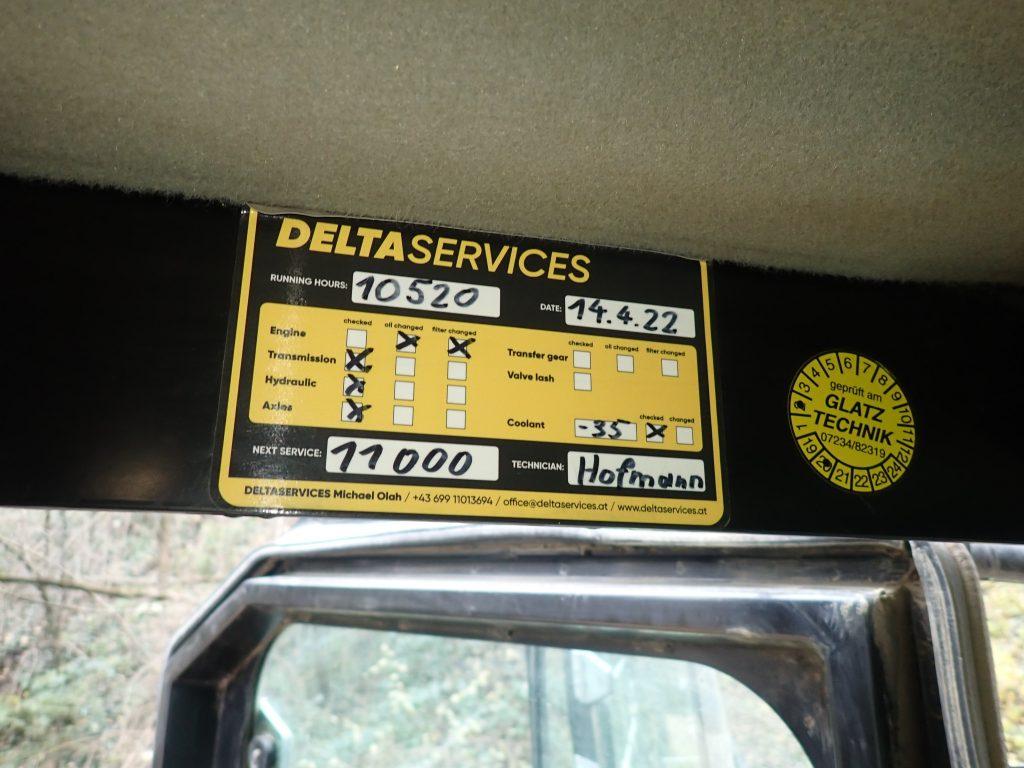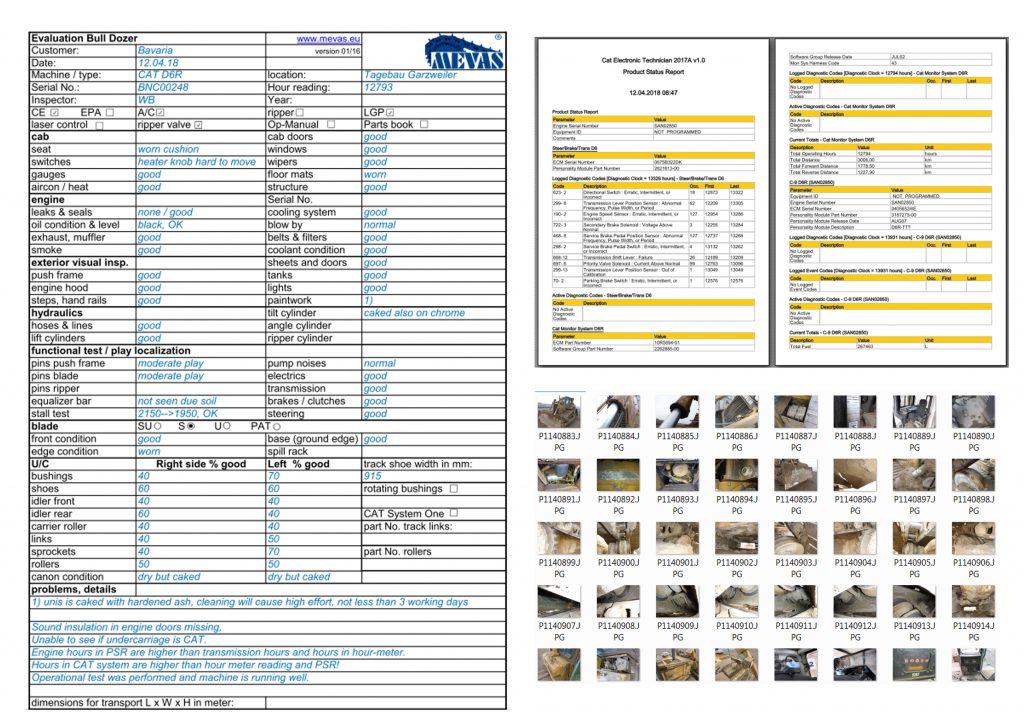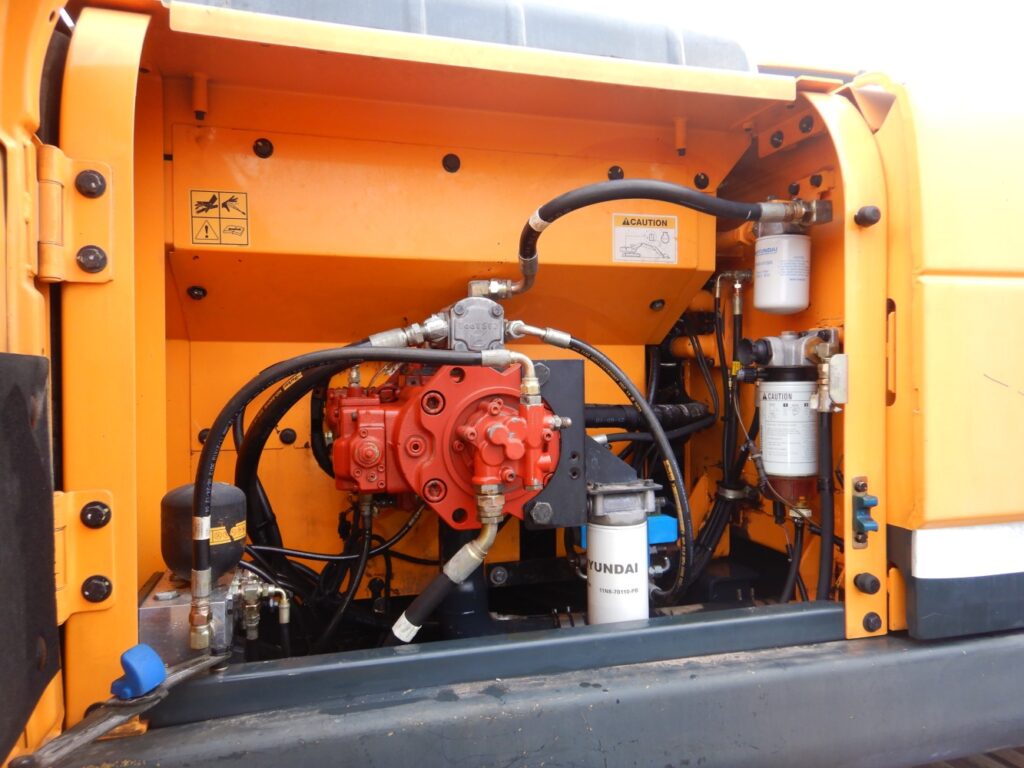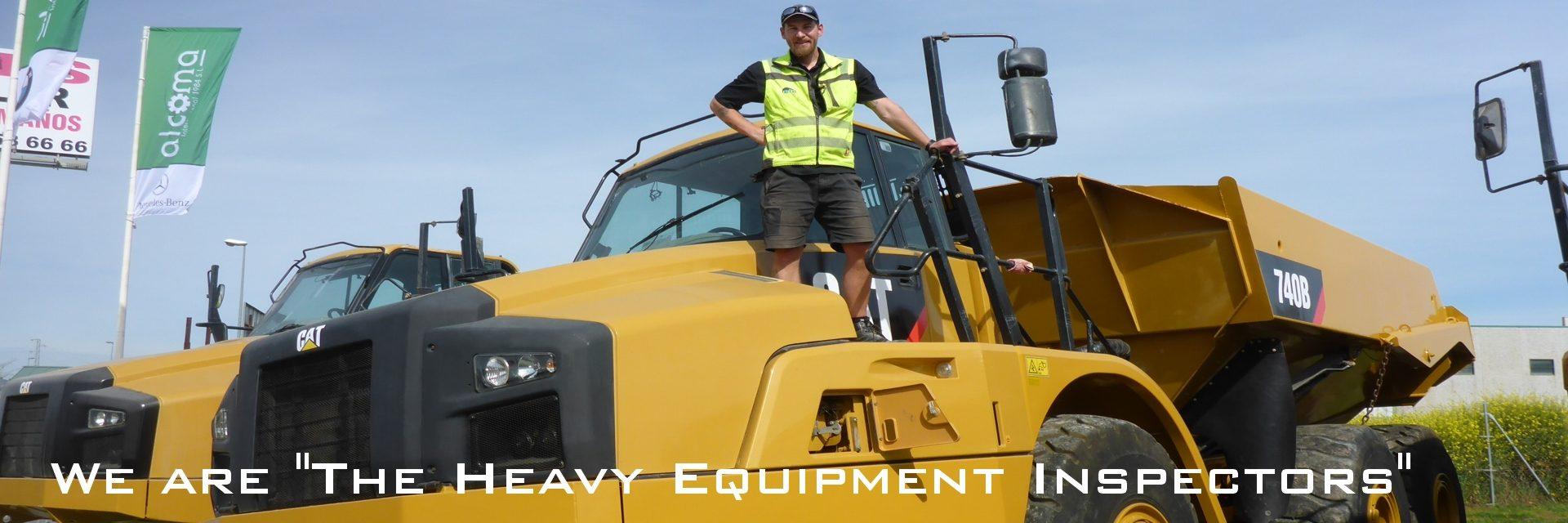How can you find information about the service history of used heavy machinery?
When investing in used construction machinery, particularly larger machines, reliable background information is essential. A machine’s value is determined by its service and component history. You should always ask: when was the engine replaced? Has the hydraulic pump been overhauled? Have the axles been changed? When was the last full service carried out, and how old are the operating oils? It is these details that make the difference between a solid investment and a costly mistake.
In the used equipment market, machines often have complex, hidden histories. For example, a wheel loader offered in Holland may never have been used there—it could easily have come from Romania, Finland or even further afield. Without reliable data, you’re left guessing.
Get machines inspected before you purchase them. Ask us for a quotation.
Unfortunately, many sellers prefer not to disclose where their machines originated or what kind of work they have been used for. While this may not be critical when buying a small mini excavator, it becomes vital when buying heavy-duty equipment. If you’re considering a 300-horsepower wheel loader, for example, you absolutely need to know how the machine was treated in the past and whether it has been maintained in line with the manufacturer’s specifications.
Origial engine and transmission still in?
One of the most important questions is whether the original engine and transmission are still installed. Without this information, it’s almost impossible to accurately estimate the remaining service life, and this uncertainty carries significant financial risk.
In short, don’t leave such a major investment to chance. The more documentation and transparency you secure upfront, the safer your decision will be, and the longer your machine will deliver reliable performance on site.
Forensic search for info about machine maintenance
The best way to find out this information is to do a thorough inspection and look for information about the origin of the machine, e.g. on the stickers in the cabin. If the dealer or seller does not want to provide the information, you can also call the manufacturer’s service partner in the respective country, where you might get the missing information. During an inspection with a contractor one can usually get some info from the local service staff.

Downloading machine info from ECU
On some machines the local dealer or an inspection service such as Mevas can download a summary from the machine ECU or ECM. Especially for Caterpillar and Volvo we can provide such service. The summary contains info about error codes, overheating or engine overspeeding. In some cases we can support with phone contact to service providers in other countries. Due our large network in the international machinery industry we know many people in various countries. Contact us please for a quotation and more info.
If a trader in Holland refuses to let Mevas to the yard for inspection it might be there is a reason. In some yards we have found often machinery with manipulated hour meters.
What is a Caterpillar PSR? How can you obtain it?
The PSR is the so-called Product Status Report. It can be downloaded from the internal ECM’s of a CAT machine or any other machine with a Caterpillar engine. To download you would need a CAT-ET, the so-called Electronic Technician. CAT dealer staff and services such as Mevas can do this for you. By the way, in a Mevas TA2 the PSR is included.
What information does the PSR document contain?
The PSR contains some important information such as:
- Engine lifetime hours
- Transmission lifetime hours
- Hydraulic Configuration
- Lifetime fuel consumption
- Injector Calibration Status
- Diagnostic Codes (Error Codes)
- Lifetime Temperatures for various components
- Tool Configuration
- DPF or Ad-Blue Status

What is the expected lifetime of heavy equipment components?
How long can an excavator be operated with original pump and engine?
Well-maintained construction machines can operate for many years, but how long do their major components actually last?
Major assemblies in large construction equipment—such as engines, transmissions, and hydraulic pumps—do not have standardized lifespans; their longevity is determined by maintenance practices, fluid quality, and operating environment. We’re often asked about the typical service life of engines, gearboxes, and hydraulic pumps. At what point does buying a used machine with high operating hours become risky? And what can you do to minimize the chance of a bad purchase?
There is no single answer, as too many factors influence the lifespan of these components. The most critical ones are regular maintenance, correct oils and filters, and proper operating conditions.
When inspecting a used machine, several clues can reveal its condition. If possible, start by downloading a status report from the machine’s controller. Tools like a Caterpillar PSR or Volvo Matris report can show whether the engine or transmission has been running at excessive temperatures. If such reports aren’t available, you’ll need to look for other signs. Heavy oil leaks or seepage at around 10,000 hours, for example, often suggest the machine has experienced overheating.
Expected lifespan of main components
Here are some general reference values for the expected service life of major assemblies when properly maintained and used under normal conditions:
- Engine and drivetrain of a smaller dozer (e.g., Caterpillar D6N): 13,000 hours
- Engine, transmission, and torque converter of a midsize dozer (e.g., Komatsu D155): 16,000 hours
- Engine, final drives, hydraulic pump, and torque converter of a large dozer (e.g., Komatsu D275): 18,000 hours
- Hydraulic pump, engine, and swing gear of a midsize excavator (e.g., Komatsu PC300): 15,000 hours
These figures come from component histories of machines operated by large contractors with skilled operators and strict maintenance routines. Individual machines can vary significantly.
Experienced technicians rely on all their senses when assessing a machine’s mechanical condition. Does the exhaust or coolant smell unusual? Are there strange noises, leaks in unusual places, or noticeable vibrations? Such cues often tell more than documents do.
Oil analysis and pressure testing
The most valuable diagnostic tool, however, is oil analysis. During an inspection, samples of oil and coolant can be taken and analysed by a certified laboratory. The levels of elements such as copper, silicon, aluminium, and iron reveal internal wear patterns. It’s essential to know how many hours the oil has been in use at the time of sampling for accurate interpretation.
Another useful tool is pressure testing. Inspectors can take oil pressures from components and compare with factory specs. However, this is more complicated as the technician would need to know under what circumstances he has to measure. He needs to know i.e. if to measure in idle or under load.

Summary:
There is no universal formula for calculating the remaining useful life for high-hour components. A comprehensive rating requires synthesizing maintenance records, digital diagnostic outputs, laboratory fluid analysis, and empirical field inspection. Engaging a professional inspector is advised; it reduces investment risk, especially when component-level rebuilt histories or warranty coverage are absent.

